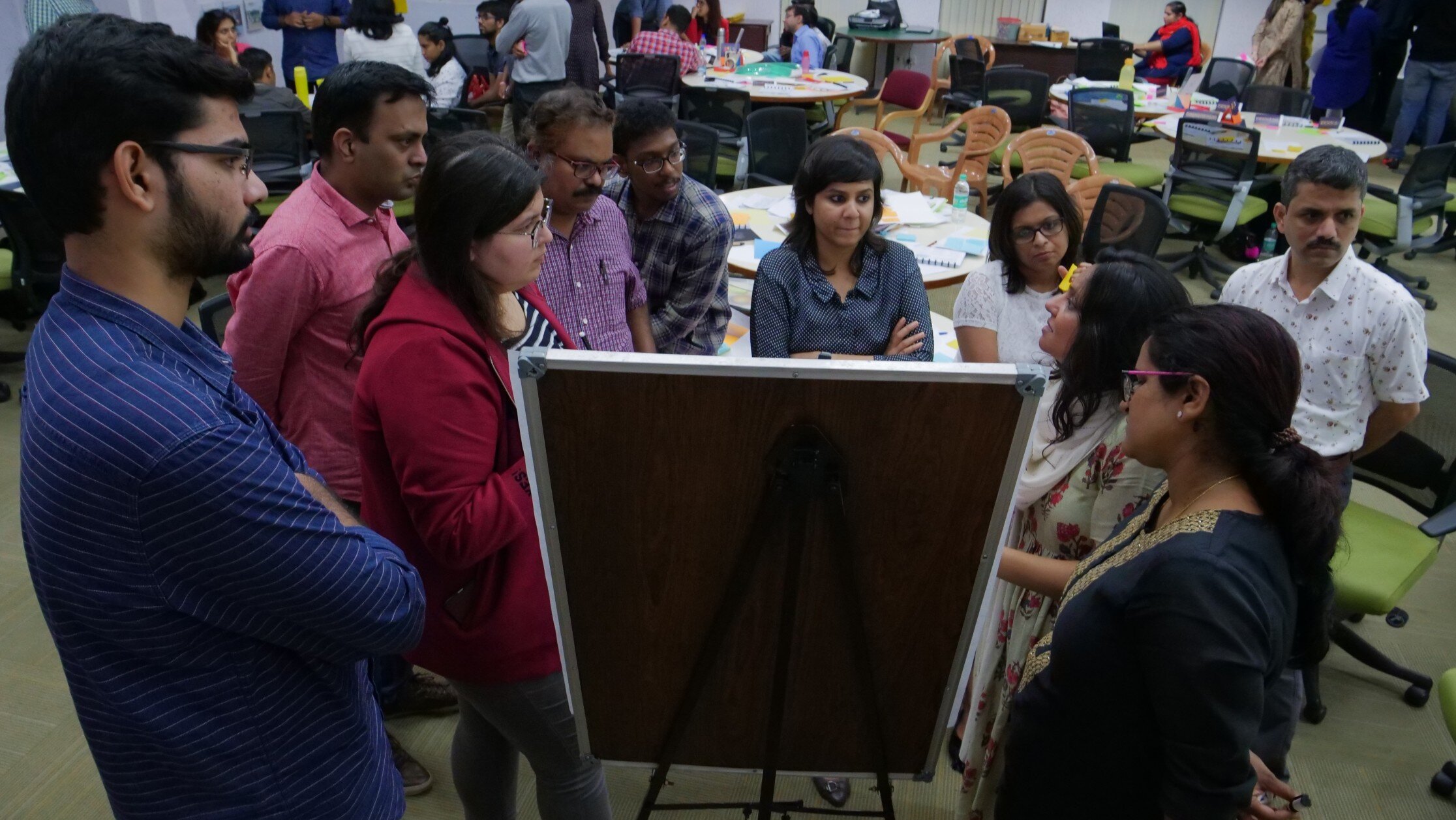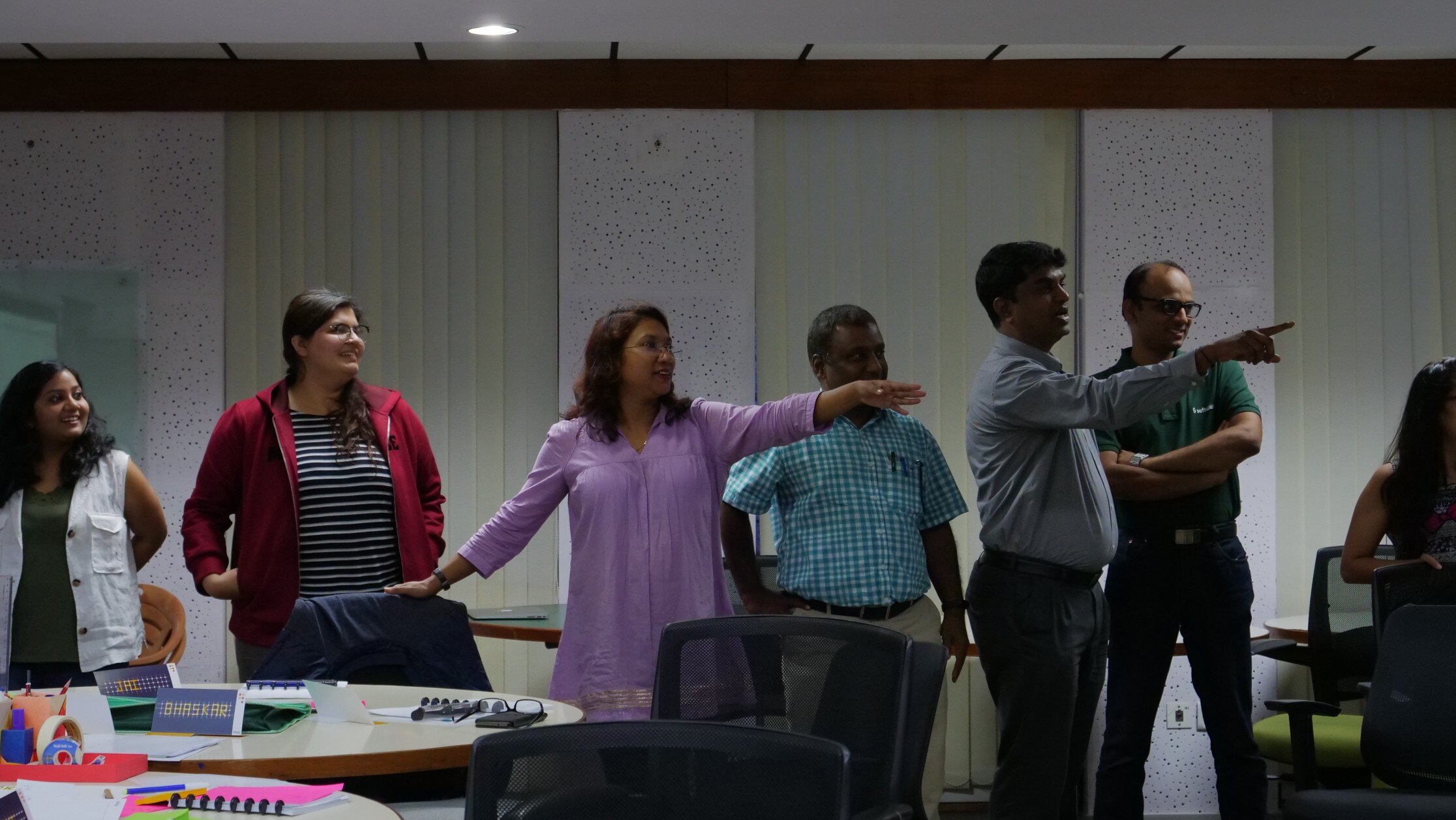Leveraging Design Thinking to Design a Successful Design Thinking Summit
Design Thinking is a creative, repeatable, human-centered approach to problem-solving and innovation. It draws upon experience, imagination, intuition, and reasoning to explore possibilities of what could be—to create desired outcomes that benefit customers. This concept has been gaining tremendous traction across various fields which have led to several Design Thinking crash courses, workshops or conferences around the globe.
Last weekend, I participated in a Design Thinking Summit organized by Pensaar Design at IIM Bangalore. Their eclectic team of strategists, researchers, visualizers and future-curious design-thinkers aimed to educate us participants on how to develop a customer-obsessed mindset.
Having studied Design for over 4 years, I have always been curious about how summits like so typically meant for non-designers capture the essence of the design thinking process in just 3 days. I presumed that it would be a mammoth challenge to do so considering the paucity of time and the summit’s ‘learning by doing’ approach to familiarize concepts.
However, I was pleasantly surprised.
Without a doubt, stellar content, format and punctuality were key highlights of the summit. However, their approach set them apart. The team adopted Design Thinking tools and mindsets to give every single participant the best learning experience that they could.
Here's diving into some the subtle ways in which the team adopted Design Thinking as observed by me over the course of three days.
I Wish - I Like
At the end of the first and second day, we were asked to write one thing that we liked about the summit and one thing we wished would be added or improved. The team collected these 140 post-it notes and quickly collected them under broad themes using the Affinity Mapping tool. Within 10 minutes, the team reverted to us with actionable ways in which our suggestions would be added in the next day’s agenda. While their agenda was previously planned meticulously, they were willing to modify it and completely omit certain aspects of the event to provide a better learning experience for everyone. Much like the Design Thinking process itself, they were participant-focused, iterative and unafraid to take a step or two back in the 11th hour.
Participants Turned Coaches
Cultivating a design thinking mindset takes practice. The Pensaar team and participants fully understand that. Hence, Pensaar assures continued learning by further coaching a few participants from previous summits to mentor individual teams in the upcoming summits. What better way to learn than to teach it yourself, right?
Experiencing Vs. Saying
Building empathy, putting yourself in the shoes of your customer and truly experiencing their experiences as your own is arguably the most important ingredient in the Design Thinking process. Similarly, the Pensaar Design team conducted short Improv activities to allow us to experience and realize the crux of a tool or method on our own versus just listing it down themselves.
'Whose line is it anyway?'
‘Whose line is it anyway?’ demonstrated that the ideation phase works best when team members dream, build on each other’s ideas and refrain from judging the idea or the person who suggested it. We came to this realization through a fun and quick silent group activity where participants were asked to build a piece of art together with only one line to be drawn per person. The result was a very creative ‘Batman-Lord Ganesha’ amalgamation!
Learning from Diverse Perspectives
The summit saw a diverse set of participants, many almost 40 years into their career and some just starting out. Regardless, I observed everyone let go of their inhibitions, learn from failure, and develop the ability to unlearn and relearn - a value that lies at the heart of practising Design Thinking.
Impact Over Time
Lastly, several tools that were taught to us by the Pensaar team had become a part of their way of thinking and working offline as well. They truly imbibed what they taught which left me in awe of the impact the process can have on people's workflows. I'm glad this workshop kickstarted that journey for many.




